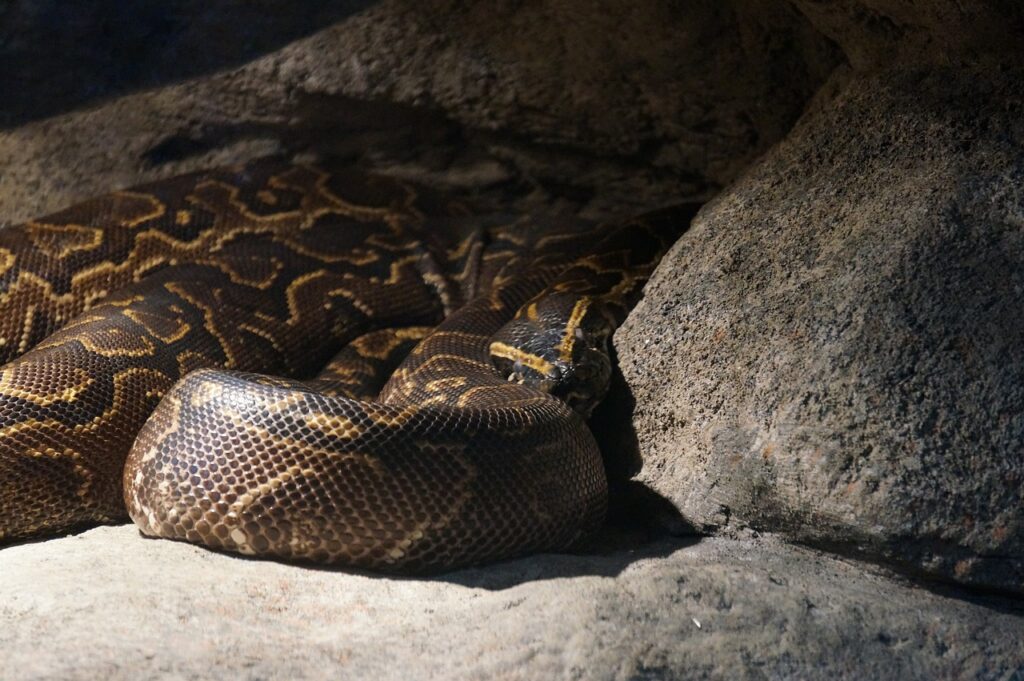BURMESE PYTHON
Python bivittatus

LENGTH

4 m
WEIGHT

167 kg
LIFESPAN

25 years
The Burmese python is one of the six largest snakes in the world, but it is the largest constrictor snake in India. It is a rather docile species and is considered an icon in India.
General characteristics
The Burmese python is a dark-coloured, non-venomous snake with many brown spots bordered with black on its back. Its skin has a web-like pattern.
They measure only 45 to 60 cm at birth, but when they reach adulthood, females reach 4.5 to 6 metres in length, while males range from 3 to 4.5 metres. Females are considerably heavier and bulkier than males, and both can easily exceed 100 kilograms.
Feeding
Like all snake species, they are carnivorous. They feed mainly on birds and mammals. To catch their prey, they use their sharp teeth to trap them, and then use their bodies to coil them up and suffocate them to death.
The food lasts for about 6 days in their stomachs, after which the prey is broken down. If threatened, they may vomit the prey in order to get away from danger more quickly.
Behaviour
This species of snake is nocturnal, so they make their living at night. Adult snakes prefer to stay on the ground and camouflage themselves with leaf forage in the rainforest, while young pythons are both on the ground and coiled in trees.
The Burmese python is a very good swimmer, and can stay in the water for more than half an hour.
Reproduction
Snakes are oviparous, and their breeding season begins in summer. When they lay their eggs, they stay to look after them until they hatch. They cover them with their bodies and move their bodies to raise the temperature so that the eggs are at the right temperature.
When the young are born, the females abandon them and they stay inside the shell until they moult their first skin. After that they go out to look for their first meal.
Threats
Snake skin is widely used to make accessories, so hunting for fur is the main threat to this python species.
Distribution
Burmese pythons are native to India, Pakistan, Nepal and Indochina. They were introduced to Florida as pets, but when owners realised the danger they posed when they grew up, they decided to release them in the Everglades National Park, which has posed a risk to the species native to the Everglades.

Did you know?
They can swallow very large animals thanks to the elasticity of their lower jaws.
Its eyesight is not very good, so it hunts using its tongue and the heat sensors in its jaws.
They can last up to 30 minutes without breathing underwater.
Conservation status
